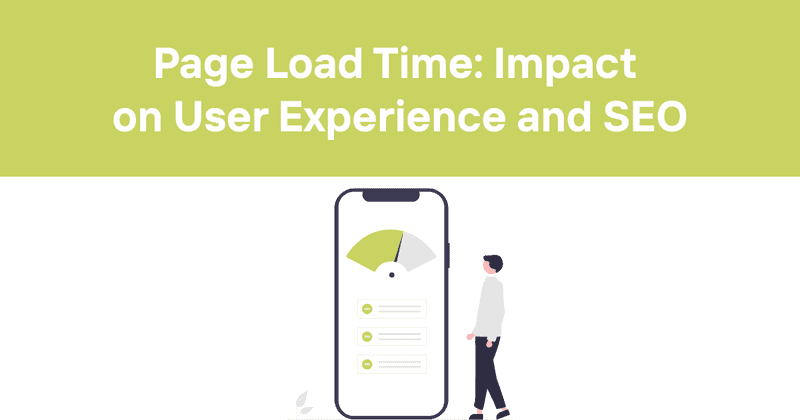Page Load Time: Impact on User Experience and SEO
Web developers know the pain all too well. You've built a stunning website with all the bells and whistles, but it's loading at a snail's pace. Your users are tapping their fingers impatiently, and before you know it, they've bounced to your competitor's site. That's the harsh reality of poor page load times in today's web environment.
Page load time is one of those metrics that seems simple on the surface but contains layers of complexity when you start digging deeper. Let's break it down and explore why it matters, how to measure it accurately, and what you can do to optimize it.
Table of Contents
- What is Page Load Time?
- Why Page Load Time Matters
- How to Measure Page Load Time
- Understanding Page Load Metrics
- Common Factors Affecting Page Load Time
- Optimization Techniques
- Mobile Page Load Considerations
- Monitoring Page Load Time
- Conclusion
What is Page Load Time?
Page load time is the amount of time it takes for a web page to fully load in a user's browser. It's measured from the moment a user initiates a request (by clicking a link or entering a URL) to the moment the entire page is fully rendered and interactive.
Technically speaking, page load time is calculated from navigation start to the firing of the load event. This means it encompasses everything from DNS lookups and establishing connections to downloading resources and rendering the page.
let loadTime = window.performance.timing. loadEventStart - window.performance .timing.navigationStart;
console.log(`Page loaded in ${loadTime} milliseconds`);
But here's the thing – this technical definition doesn't always align with the user's perception of page load time. A page might not be "fully loaded" in the technical sense, but if users can see and interact with the content they care about, they'll perceive it as loaded. This leads us to the concept of perceived performance, which we'll discuss later.
Why Page Load Time Matters
There's a reason everyone from small bloggers to tech giants obsess over page load times. It directly impacts:
-
User Experience: Studies show users typically abandon sites that take more than 3 seconds to load. I've personally closed browser tabs countless times while waiting for slow sites.
-
Conversion Rates: Walmart found that for every 1-second improvement in page load time, they experienced a 2% increase in conversions.
-
SEO Rankings: Google uses page speed as a ranking factor in search results.
-
Bounce Rates: Slow loading pages lead to higher bounce rates, with users leaving before engaging with your content.
-
Mobile Experience: With mobile internet usage surpassing desktop, load times become even more critical as mobile networks can be less reliable.
Let me share a quick anecdote: I once worked on an e-commerce site where we slashed load times from 6.2 seconds to 2.1 seconds. The result? A 23% increase in page views and a 17% bump in conversions. Never underestimate the power of speed.
How to Measure Page Load Time
There are several ways to measure page load time, each with its pros and cons.
Using JavaScript
JavaScript provides straightforward methods to measure page load time through the Performance API.
The traditional method uses the performance.timing object:
setTimeout(function() {
let timing = window.performance.timing;
let pageLoadTime = timing.loadEventStart - timing.navigationStart;
console.log ("Page load time: " + pageLoadTime + " milliseconds");
}, 0);
});
For newer browsers, you can use the Navigation Timing API:
let navigationEntry = performance.getEntriesByType ('navigation')[0];
let pageLoadTime = navigationEntry. loadEventStart - navigationEntry.startTime;
console.log ("Page load time: " + pageLoadTime + " milliseconds");
});
You can even display this information on your page:
setTimeout(function() {
let timing = window.performance.timing;
let pageLoadTime = timing.loadEventStart - timing.navigationStart;
document.getElementById ('loadTime').innerHTML =
"This page loaded in " + (pageLoadTime / 1000).toFixed(2) + " seconds";
}, 0);
});
Just add a <div id="loadTime"></div> to your HTML where you want the time to appear.
Using PHP
If you're running a PHP-based website, you can measure server-side processing time with a few lines of code:
$start_time = microtime(true);
// Your PHP code here
$end_time = microtime(true);
$execution_time = ($end_time - $start_time);
echo "Script execution time: " . $execution_time . " seconds";
?>
But remember, this only measures server processing time, not the complete page load experience for users.
For a more comprehensive approach, place this at the top of your PHP file:
And this at the bottom:
This page was generated in <?php echo number_format(microtime(true) - $start_time, 2); ?> seconds.
</div>
Browser Developer Tools
Every major browser includes developer tools with timing information:
- Chrome: Open DevTools (F12), go to the Network tab, and look at the timing information at the bottom.
- Firefox: Open Developer Tools, go to the Network tab, and check the timings.
- Safari: Open Web Inspector, go to the Network tab, and examine the timing data.
- Edge: Press F12, go to the Network tab, and review timing details.
I find Chrome's DevTools particularly useful because they provide a waterfall view showing exactly what's loading when.
Performance Testing Tools
For more comprehensive analysis, several online tools can provide detailed metrics:
- Google PageSpeed Insights: Analyzes your page and provides optimization suggestions.
- WebPageTest: Allows testing from multiple locations and browsers.
- GTmetrix: Provides detailed performance reports and recommendations.
- Lighthouse: An open-source tool for improving web page quality.
- Pingdom: Offers performance monitoring and page speed analysis.
Understanding Page Load Metrics
While total page load time is important, breaking it down into smaller metrics helps identify specific bottlenecks:
Time to First Byte (TTFB)
TTFB measures how long it takes for the browser to receive the first byte of data from the server. This metric is primarily influenced by server performance, network conditions, and distance from the server.
A high TTFB (over 200ms) often indicates server-side issues:
- Slow server processing
- Database queries
- Network latency
- DNS lookup delays
First Contentful Paint (FCP)
FCP marks the time when the browser renders the first bit of content from the DOM, giving users the first visual feedback that the page is loading.
Good FCP times:
- Fast: 0-1.8 seconds
- Moderate: 1.8-3 seconds
- Slow: Over 3 seconds
Largest Contentful Paint (LCP)
LCP measures when the largest content element (usually an image or text block) becomes visible. It's a key metric in Google's Core Web Vitals.
Target LCP times:
- Good: Under 2.5 seconds
- Needs improvement: 2.5-4 seconds
- Poor: Over 4 seconds
Time to Interactive (TTI)
TTI measures how long it takes for the page to become fully interactive, meaning all page elements are responsive to user input.
A good TTI should be under 3.8 seconds for optimal user experience.
Total Page Load Time
This is the complete time from navigation start to load event completion. While comprehensive, it doesn't always reflect the user's perception of performance.
Common Factors Affecting Page Load Time
Several elements can slow down your page:
-
Server Response Time: Slow servers lead to high TTFB values.
-
Resource Size: Large JavaScript files, unoptimized images, and excessive CSS can dramatically increase load times.
-
Render-Blocking Resources: JavaScript and CSS that prevent the page from rendering until they're downloaded and processed.
-
Network Conditions: User bandwidth, latency, and network reliability impact load times.
-
Browser Caching: Not leveraging browser caching forces repeat downloads of static resources.
-
DNS Lookup Time: Time spent resolving domain names to IP addresses.
-
Number of HTTP Requests: Each resource (image, script, stylesheet) requires a separate HTTP request.
-
Mobile Optimization: Pages not optimized for mobile devices load slower on smartphones and tablets.
One often overlooked factor is third-party scripts. I once had a client whose page load times mysteriously doubled overnight. After investigation, we discovered their marketing team had added a hefty analytics script without telling the development team. After optimizing the script loading, we got the load times back under control.
Optimization Techniques
Now for the good stuff – how to make your pages load faster.
Server-Side Optimizations
-
Use a Fast Web Host: Shared hosting might be cheaper, but dedicated or cloud hosting solutions often provide better performance.
-
Implement Server Caching: Use tools like Redis, Memcached, or built-in caching in your CMS.
-
Optimize Database Queries: Poorly written queries can bring your server to a crawl.
-
Enable Compression: Configure your server to use Gzip or Brotli compression.
-
Implement HTTP/2: This protocol offers multiplexing, header compression, and prioritization.
-
Server-Side Rendering (SSR): Pre-render pages on the server to reduce client-side processing.
Front-End Optimizations
-
Minify CSS, JavaScript, and HTML: Remove unnecessary characters without changing functionality.
-
Optimize Images: Use modern formats like WebP, compress images, and implement lazy loading.
-
Reduce HTTP Requests: Combine files where possible and use CSS sprites for multiple small images.
-
Defer Non-Critical JavaScript: Use the
deferorasyncattributes for scripts that aren't needed immediately. -
Implement Critical CSS: Inline critical CSS in the head of your document to avoid render-blocking.
-
Remove Unused Code: Dead code adds size without providing benefits.
-
Use Browser Caching: Set appropriate cache headers to prevent unnecessary reloads.
Here's a simple example of how to configure caching headers in Apache:
ExpiresActive On
ExpiresByType image/jpg "access plus 1 year"
ExpiresByType image/jpeg "access plus 1 year"
ExpiresByType image/gif "access plus 1 year"
ExpiresByType image/png "access plus 1 year"
ExpiresByType text/css "access plus 1 month"
ExpiresByType application/pdf "access plus 1 month"
ExpiresByType text/javascript "access plus 1 month"
ExpiresByType image/x-icon "access plus 1 year"
ExpiresDefault "access plus 1 month"
</IfModule>
Content Delivery Networks (CDNs)
CDNs can drastically improve page load times by:
-
Distributing Content Globally: Serve resources from servers geographically closer to users.
-
Caching Static Resources: Store copies of static files at multiple locations.
-
Optimizing Delivery: Many CDNs automatically optimize images and compress files.
-
Reducing Server Load: Offload traffic from your origin server.
-
DDoS Protection: Many CDNs offer protection against distributed denial-of-service attacks.
Popular CDN options include Cloudflare, Akamai, Amazon CloudFront, and Fastly.
Mobile Page Load Considerations
Mobile users face unique challenges:
-
Slower Networks: Mobile connections are often less reliable than wired broadband.
-
Limited Processing Power: Mobile devices typically have less computational power than desktops.
-
Battery Considerations: Heavy JavaScript execution drains batteries faster.
To optimize for mobile:
- Implement responsive design
- Further compress images for mobile users
- Consider a mobile-first approach to development
- Test on actual mobile devices, not just emulators
- Use the
<picture>element to serve different image sizes
Monitoring Page Load Time
One-time optimization isn't enough. Continuous monitoring helps ensure your site remains fast:
-
Set Up Real User Monitoring (RUM): Collect actual user performance data.
-
Configure Synthetic Monitoring: Schedule regular tests from different locations.
-
Establish Performance Budgets: Set thresholds for key metrics and create alerts when they're exceeded.
-
Track Core Web Vitals: Monitor LCP, FID (First Input Delay), and CLS (Cumulative Layout Shift).
-
Monitor Third-Party Services: Keep an eye on external scripts and services that might affect your performance.
Here's a table comparing different monitoring approaches:
| Approach | Pros | Cons | Best For |
|---|---|---|---|
| Real User Monitoring | Real-world data, captures actual user experience | Can't test pre-release features, privacy concerns | Understanding actual user experience |
| Synthetic Monitoring | Consistent testing environment, proactive detection | Doesn't capture real user variables | Detecting issues before users do |
| Developer Tools | Free, detailed analysis | Manual process, not continuous | Development and debugging |
| Performance APIs | Direct access to metrics, customizable | Requires implementation, sampling issues | Custom dashboards and logging |
Practical Implementation Examples
Let's look at a few practical examples of how to display page load time on your website:
Basic JavaScript Implementation
<html>
<head>
<title>Page Load Time Demo</title>
<script>
// Record the start time as early as possible
window.startTime = new Date().getTime();
</script>
</head>
<body>
<h1>Page Load Time Demo</h1>
<!-- Your page content here -->
<div id="loadTimeDisplay"></div>
<script>
window.addEventListener ('load', function() {
// Calculate load time once everything is loaded
let endTime = new Date().getTime();
let loadTime = (endTime - window.startTime) / 1000;
// Display the result
document.getElementById ('loadTimeDisplay'). textContent =
"This page loaded in " + loadTime.toFixed(2) + " seconds";
});
</script>
</body>
</html>
PHP Implementation
// Start time at the very beginning of the script
$start_time = microtime(true);
// Your PHP code and HTML output here
?>
<!DOCTYPE html>
<html>
<head>
<title>PHP Page Load Time Demo</title>
</head>
<body>
<h1>PHP Page Load Time Demo</h1>
<!-- Page content here -->
<div class="load-time">
<?php
$end_time = microtime(true);
$load_time = $end_time - $start_time;
echo "Server processing time: " . number_format($load_time, 4) . " seconds";
?>
</div>
<script>
window. addEventListener ('load', function() {
let timing = performance.timing;
let clientLoadTime = (timing. loadEventEnd - timing.navigationStart) / 1000;
document. querySelector ('.load-time').innerHTML +=
"<br>Total page load time: " + clientLoadTime. toFixed(4) + " seconds";
});
</script>
</body>
</html>
Performance API Example
window.addEventListener ('load', function() {
// Create a performance observer
const observer = new PerformanceObserver ((list) => {
const entries = list.getEntries();
// Create a table to display metrics
let table = document.createElement ('table');
table.border = '1';
table.style.margin = '20px 0';
// Add header row
let headerRow = table.insertRow();
['Metric', 'Value (ms)'].forEach(text => {
let cell = headerRow.insertCell();
cell.textContent = text;
cell.style.fontWeight = 'bold';
});
// Add data rows
entries.forEach(entry => {
let row = table.insertRow();
let nameCell = row.insertCell();
let valueCell = row.insertCell();
nameCell.textContent = entry.name;
valueCell.textContent = Math.round (entry.startTime + entry.duration);
});
// Add to page
document.body. appendChild(table);
});
// Start observing paint entries
observer.observe ({entryTypes: ['paint', 'largest-contentful-paint']});
// Display navigation timing data
let timing = performance.timing;
let loadTime = timing.loadEventEnd - timing.navigationStart;
let div = document.createElement('div');
div.innerHTML = `
<h3>Page Load Metrics:</h3>
<p>Total Load Time: ${loadTime}ms</p>
<p>DNS Lookup: ${timing.domainLookupEnd - timing. domainLookupStart}ms</p>
<p>Server Connection: ${timing.connectEnd - timing.connectStart}ms</p>
<p>Server Response: ${timing.responseStart - timing.requestStart}ms</p>
<p>DOM Processing: ${timing.domComplete - timing.domLoading}ms</p>
`;
document.body. appendChild(div);
});
</script>
Balancing Speed and Functionality
Here's a truth many developers don't want to hear: sometimes you need to sacrifice features for speed. I've been in countless meetings where marketing wants to add yet another tracking pixel, or design wants to implement a fancy animation, without considering the performance impact.
The trick is finding the right balance. Ask yourself these questions:
- Does this feature truly enhance the user experience?
- Can we implement it in a more performance-friendly way?
- Is the performance hit worth the business value?
Sometimes the answer is yes – certain features are worth a slight performance hit. But often, there are compromises or alternative implementations that can maintain both performance and functionality.
Monitoring Page Load Time with Odown
Keeping track of your page load times shouldn't be a manual process. Automated monitoring tools like Odown can continuously track your website's performance and alert you when issues arise.
Odown offers several advantages for monitoring page load time:
-
Real-time monitoring: Track your website's load time continuously from multiple locations around the world.
-
Historical data: View trends and patterns in your page load times over days, weeks, or months.
-
Alerting system: Get notified immediately when page load times exceed your defined thresholds.
-
Detailed reports: Break down performance issues to identify exactly what's causing slowdowns.
-
SSL monitoring: Ensure your secure connections aren't adding unnecessary overhead to load times.
-
Public status pages: Transparently communicate performance metrics with your users.
By integrating Odown into your performance monitoring strategy, you can proactively address issues before they impact your users, maintain optimal page load times, and ensure your website provides the best possible user experience.
Conclusion
Page load time isn't just a technical metric – it's a critical component of user experience that directly impacts engagement, conversions, and ultimately, your bottom line. By understanding how to measure, analyze, and optimize load times, you're equipping yourself to create faster, more responsive web experiences.
Remember that optimization is an ongoing process, not a one-time fix. As your site evolves, new content is added, and third-party scripts change, you'll need to continuously monitor and improve performance.
The tools and techniques covered in this article provide a solid foundation for measuring and optimizing page load time. Implementing these strategies, along with leveraging monitoring solutions like Odown, will help ensure your website stays fast and responsive for all users, regardless of their device or connection speed.
Fast-loading pages aren't just good for users – they're good for business. So start measuring, start optimizing, and watch your user engagement grow.



